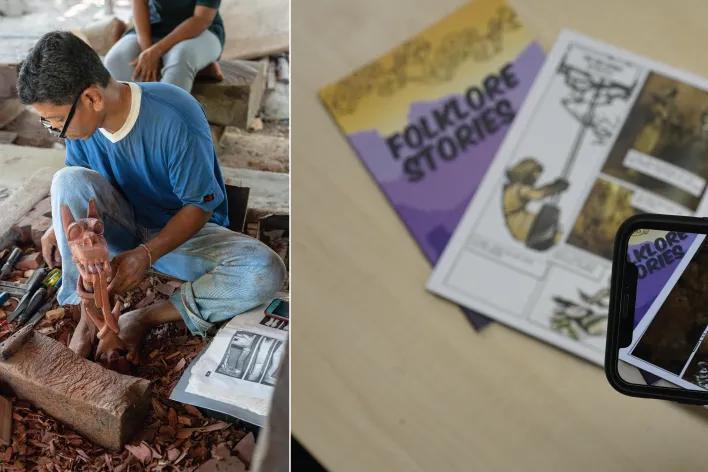Digitising Mah Meri’s Indigenous Culture and Heritage
One of the indigenous tribes in Malaysia, the Mah Meri, carves figures and masks as part of their rituals. These sculptures and masks are employed in their religious ceremonies and ritualistic worship, as well as in the transmission of folklore from their heritage and culture. These artefacts' carvings can be examined to understand their way of life. The presence of spirits in the carvings on their masks and statues is a component of this animistic religion. They use wood from their dwellings and the banks of rivers to craft these objects.
The culture and tradition of the Mah Meri people are an excellent example of tangible objects that are supported by their intangible folkloric values. Despite some of them accepting other religions, they still practices these animistic beliefs. Every year, the community will come together to commemorate the day of the ancestors and for blessings from the shaman. The carvings depict their mythology and religious beliefs about their spirits. For instance, the mask of a gibbon depicts a legend about a hunter who unintentionally killed a gibbon in the forest and had to replace it in order to satisfy the ghost.
The stories that make up this intangible heritage are in danger of being extinct. These distinctive "mediums" are an excellent instrument for preserving the stories and serving as a representation of their culture. But, the stories themselves could pass away if the storyteller did. The essence of the craft itself can vanish if the subsequent generations don't accept the stories as integral to the work. In addition, because of the growth of technology, children today are a generation that craves "visual" stimulation, and their interest in traditional folktales is waning. As a result, keeping the folktales alive is very difficult.
Photogrammetry was used to digitised their masks and sculptures using and recording the legends associated with them. This folktale conveys a lot about how people view and respect nature. The findings were studied to explore how transmedia storytelling, installations, and augmented reality could be used to share their culture and history.
Displays of commonplace devices were used to attempt to visually bring the tales that were recounted back to life. Digital sketches were created from the stories that were recounted orally, which were then animated and displayed as part of an exhibition. These tales were then modified to be suitable for usage in augmented reality storybooks.
The container provided, was intended to demonstrate and disseminate the folklore's multi-media depiction. In addition to that, what this multi-media production can accomplish for their neighbourhood and how it can support their efforts to preserve knowledge and pass it on to future generations was also examined. The carvers frequently used an outdated book from the 1970s to reference their carvings. The younger generations won't be able to carry on with this craft if that book is destroyed or lost or if the carvers are no longer alive.
Not only that, but the communities as a whole need to talk about the issue of a reliable income. It is difficult to imagine that the households' sole source of income—mask and statue carving—come from tourists who frequently visit uninvited. The intention here is to increase the amount of data already digitised and create a "museum" proof of concept that will hopefully be set up for the Mah Meri villages.
Delas Santano
School of Arts
Email: @email




